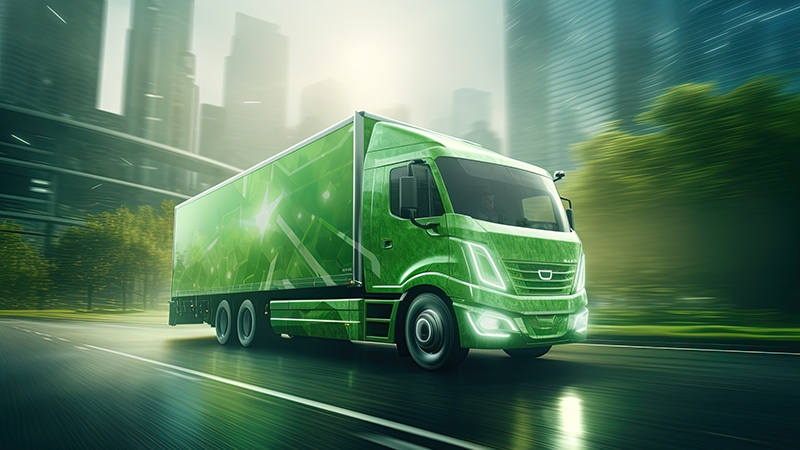5 Ways AI-Powered Logistics Maximize Eco Savings

Logistics providers increasingly turn to artificial intelligence to help operate sustainable and cost-effective supply chains.
The environmental toll shipping inefficiencies cause is proving costly. Companies are now setting net-zero carbon goals to achieve and maintain sustainable business practices while minimizing their environmental impact.
To do this, companies are turning to artificial intelligence (AI). Here are five ways logistics providers can leverage AI to operate supply chains sustainably and cost-effectively.
1. Logistics planning. AI can process vast amounts of data to optimize the movement of goods. Food shippers and logistics providers are now applying machine learning algorithms to accurately predict shipment ETAs across all transportation modes. For ocean container shipments, AI systems can accurately forecast weather conditions and diagnose the impact of disruptive events along each shipment’s route.
Due to multi-terminal stops and widely variable transit times, predicting arrival times for less-than-truckload (LTL) shipments has previously been a challenge. With AI, shippers and logistics providers can predict LTL shipment delivery times within minutes.
2. Mode management. According to the Massachusetts Institute of Technology (MIT), over-the-road hauling can emit over 100 times as much CO2 as ships carrying the same freight amount. Data from the EPA shows moving cargo by rail rather than truck lowers GHG emissions by up to an average of 75%.
Leveraging AI for sustainable network optimization makes it possible to analyze vast internal and external data to create multimodal transportation solutions. Furthermore, introducing sustainable alternatives can cut a shipment’s transportation costs by around 60%.
3. Shipment consolidation. Milk-run shipments can prevent stockouts; however, shipments may occur before truly needed, run partially empty or require additional material handling and equipment that severely strains sustainability.
With AI, food shippers and their logistics partners can determine the best cadence for cargo that balances service requirements with sustainability. Doing so reduces the need for additional over-the-road truck movements that generate harmful emissions.
4. SmartWay selections. The SmartWay program tracks, documents, and shares information about fuel usage, freight emissions, and environmental risks across the supply chain. Freight shippers, carriers, and logistics companies voluntarily partner with the EPA to measure and improve operations to reduce their ecological footprint.
With AI, logistics partners can prioritize top-ranked fleets using SmartWay data without manually filtering through thousands of transportation providers. Additionally, AI can examine data retrospectively to make future recommendations, advancing sustainability goals with minimal supply chain disruptions.
5. Working in the warehouse. Estimates show that 90% of warehouses primarily rely on manual processes, creating space and energy inefficiencies. By turning to technology, these companies can increase throughput while decreasing the environmental footprint.
Innovations like dynamic slotting use AI algorithms to decrease inventory space. AI improves inventory management by predicting demand, tracking current inventory and optimizing stocking levels. AI can suggest an appropriate box size based on an order’s dimensions to minimize packaging waste.
AI will continue to rapidly evolve and change the landscape of industries across the board. At the end of the day, a successful business is people-centric and technology-enabled.
To learn about the full scope of Jarrett’s AI strategies, visit www.gojarrett.com.

